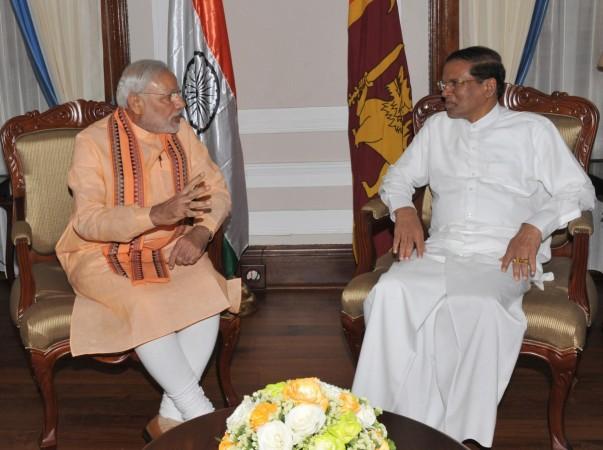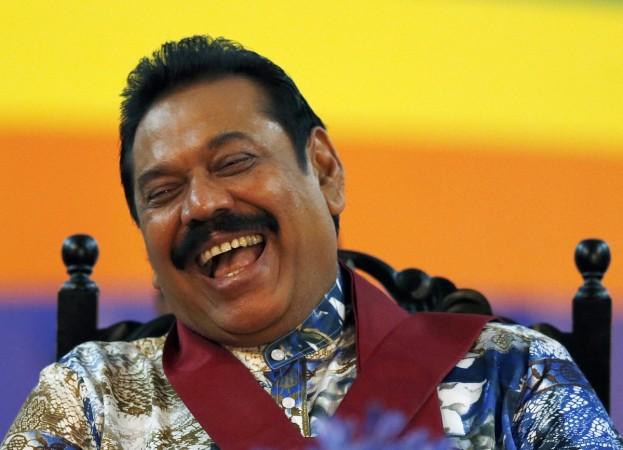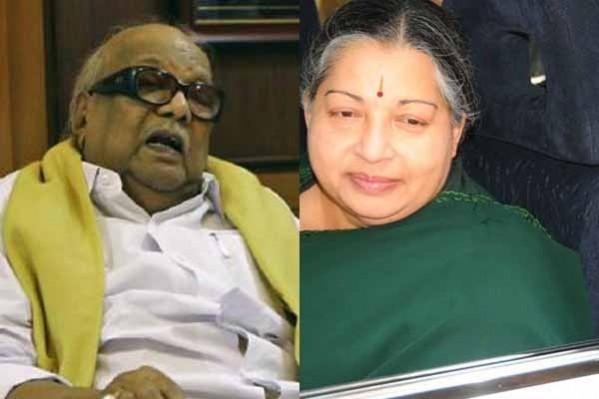
Prime Minister Narendra Modi is back – back to his tight foreign trip schedules. The man, who has visited over 50 countries in less than three years of his premiership, is all set to visit Sri Lanka in what constitutes his first foreign trip of 2017. It will be his second visit to the maritime neighbour (he had gone there in March 2015) and both India and Sri Lanka will look forward to cement the ties that go back over centuries.
Modi's latest visit to Lanka is taking place at a time when China's influence in the island-nation is again on the rise. During his last visit which had taken place soon after the defeat of Mahinda Rajapaksa and the coming of a friendlier Maithripala Sirisena to power. Modi had then vowed to script a golden chapter in the history of the two countries.
Modi out to deal with China's influence on Lanka
Fast forward to 2017 and again New Delhi's Sri Lanka policy looks to be facing some challenges. In December 2016, Sri Lankan Prime Minister Ranil Wickremasinghe had said that his country was seeking to buy more military transport aircraft from the Chinese as well as the latter's help to transform the failed Hambantota port into a functioning hub.
Thanks. I am eager to interact with the wonderful people of Sri Lanka. https://t.co/8kgXwqXCtP
— Narendra Modi (@narendramodi) May 11, 2017
Beijing is also building an entirely new city along Colombo's coastline which is set to become the city's central business district in another one-and-half decades, creating 80,000 jobs for the Sri Lankans, under its 'Belt and Road Initiative'. China has reiterated that the port city project is in Sri Lanka's best interests, clearly indicating that its projects-instead-of-cash policy has helped in spreading its sphere of influence across Asia.

Against these Chinese designs, India could never remain silent. During Wickramsinghe's visit to India in April end, the two neighbours signed a Memorandum of Understanding (MoU) though voices back in Lanka termed it as "worst betrayal" even before the premier set his foot on India. But Wickeramsingh'e visit had a bigger significance.
From India's perspective, it was a message to Colombo that it was not only eager to back the development projects in Sri Lanka but also appreciated the Sirisena-Wickremasinghe unity government's course correction from the Rajapaksa days. In the competition with the Chinese to influence Sri Lanka, the message of solidarity was always crucial from India's point of view.
Security in Indian Ocean Region also a key area for India
Besides, India has another important aspect to address and it is about the security in the Indian Ocean Region (IOR). Here too, China's growing naval influence in the region has put both India and the US in a spot of concern and New Delhi had to take Colombo into confidence to facilitate its own security mechanism in the region. China is likely to show its harder side in the IOR as a counterpunch to what its competitors are doing in the South China Sea or Asia Pacific region and to tackle the challenge, India has to get as much closer to Lanka as possible.
The main focus of the MoU is on energy projects, infrastructure and port development with the help of India and investment in Trincomalee and Colombo and also roads in the Northern Province. If these projects materialise, then India would play an instrumental role in integrating the northern and eastern regions with the rest of Sri Lanka.
Given the country's bloodied history in terms of ethnic violence, a contribution towards Lanka's nation-building procedure will only brighten New Delhi's image. India has been particularly careful about not allowing its projects in Lanka to get hit by delays, something which has happened often in the past.
Japan also joins India to help Sri Lanka
Another important feature of the latest India-Lanka episode is that India has joined hands with Japan to set up a floating LNG terminal, a 500-MW LNG power plant and gas-distribution pipeline at Kerwalpitiya in Sri Lanka. This would also see India and Japan, both having a common foe in China, cooperating on projects in Sri Lanka as well as strategically converging in the IOR. That Wickremasinghe's itinerary also included Japan and Vietnam, two allies of the US, besides India also gives the indication that Colombo is serious about correcting its course even it was looking to China for funding in between.
PM Modi is set to build on this platform during his visit to Sri Lanka. He will also visit the three-day celebration of the United Nations Day of Vesak which will begin on May 12 in Colombo and conclude in Kandy.
The cultural celebration will not only cement the spiritual bonding between the two countries but will also dilute the focus from the political. As mentioned earlier, the MoU signed during the Lankan prime minister's visit saw some political backlash in that country's domestic circles and India needs to undertake ways, marked by patience and continued talks, to allay apprehensions that it is here to bully its small neighbour.

No compulsion of Tamil vote-bank politics for PM Modi
One major advantage that India enjoys in its relation with Sri Lanka is the fall of the ethnic vote politics in Tamil Nadu. With the demise of Jayalalithaa and the retreat of Karunanidhi, two towering personalities, Tamil Nadu is now witnessing a vacuum in its politics and one is not certain whether it will be filled any time soon. It gives the Modi government a free hand to deal with its southern neighbour without carrying any baggage of the past.
New Delhi had committed blunders while looking at Sri Lanka through the narrow prism of regional and blackmailing politics from the southern vote mongers. Modi doesn't have that impediment and can direct his Sri Lanka policy in a way he wishes.

















